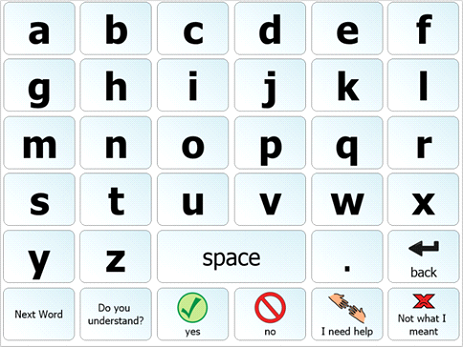Blog
AAC Alphabet Boards

This aided low-tech alphabet board has a simple, fixed visual display that could benefit a variety of populations. Most importantly, this type of alphabet board is beneficial for individuals who are literate or in the early stages of literacy. Individuals who use this board must be able to spell; however, alphabet boards can also support and facilitate the development of spelling skills. When children learn to read and write they are first introduced to lowercase letters because lowercase letters are the majority of what is printed in books. This alphabet board showcases lowercase letters, making it more recognizable for individuals with emerging literacy skills.
This alphabet board also benefits individuals who rely on speech to communicate in diverse settings; in other words, an alphabet board can provide more language than what a picture communication board can because typing allows the individual to formulate their own thoughts without relying on what limited pictures would otherwise be available to them. Additionally, this board also has other symbols listed on the bottom that can facilitate effective communication when spelling may not be necessary. For example, the AAC user could select “yes” or “no” in response to a question, or state “not what I meant”. These symbols can be used in every conversation; therefore, it is helpful for the AAC user to have quick access to them.
Finally, alphabet boards are not only beneficial for those who have the motor capabilities to select letters, but they can also be used by those who lack motor control. An AAC user without motor control can utilize linear scanning instead of the selection technique (Beukelman & Light, 2020). This chosen alphabet board would provide AAC users who use this technique with a simple and predictable format to engage with.
Sources:
Beukelman, D. R. & Light, J.C. (2020). Augmentative & Alternative Communication: Supporting children and adults with complex communication needs. Baltimore: Paul H. Brookes Publishing Co.




